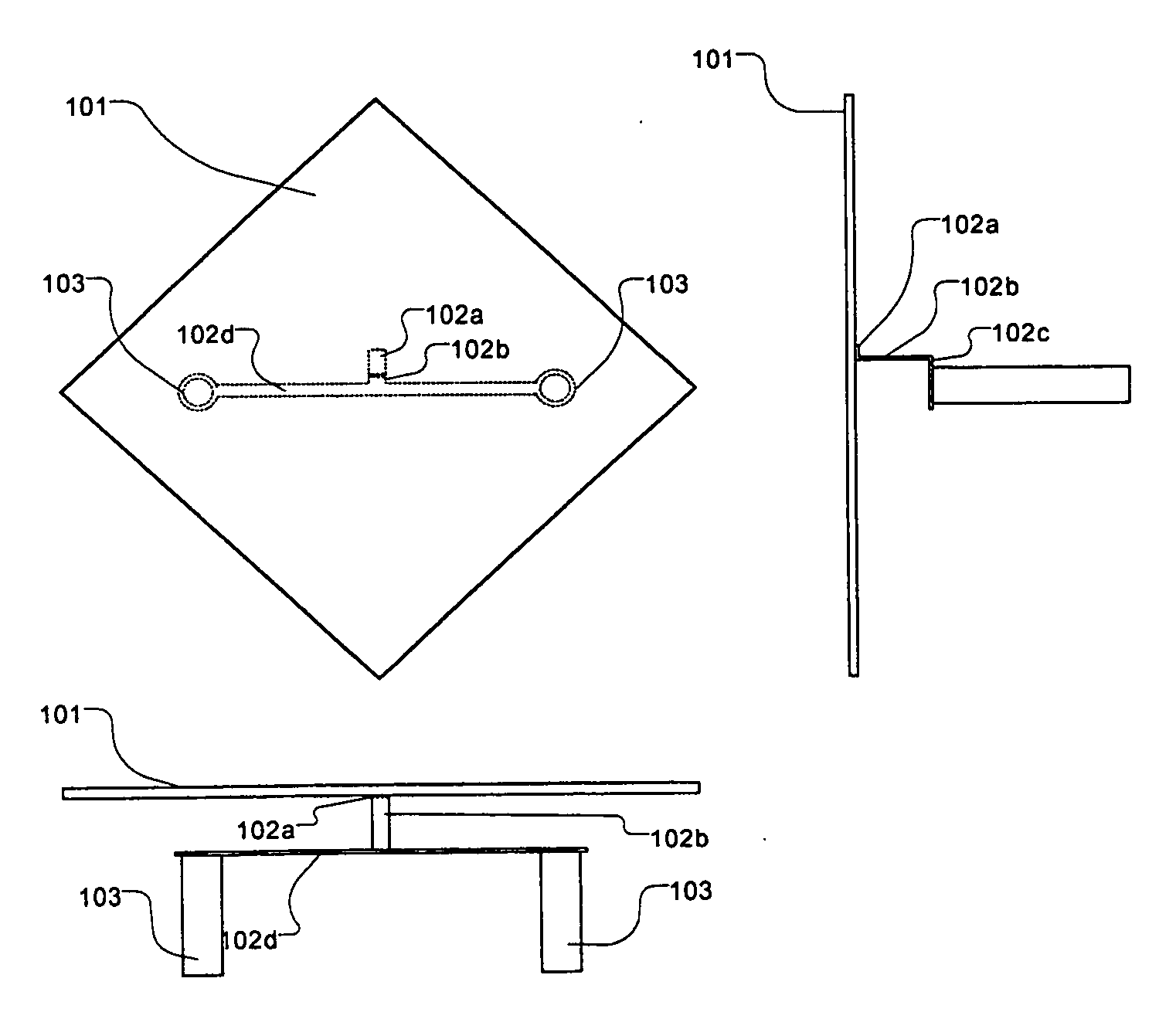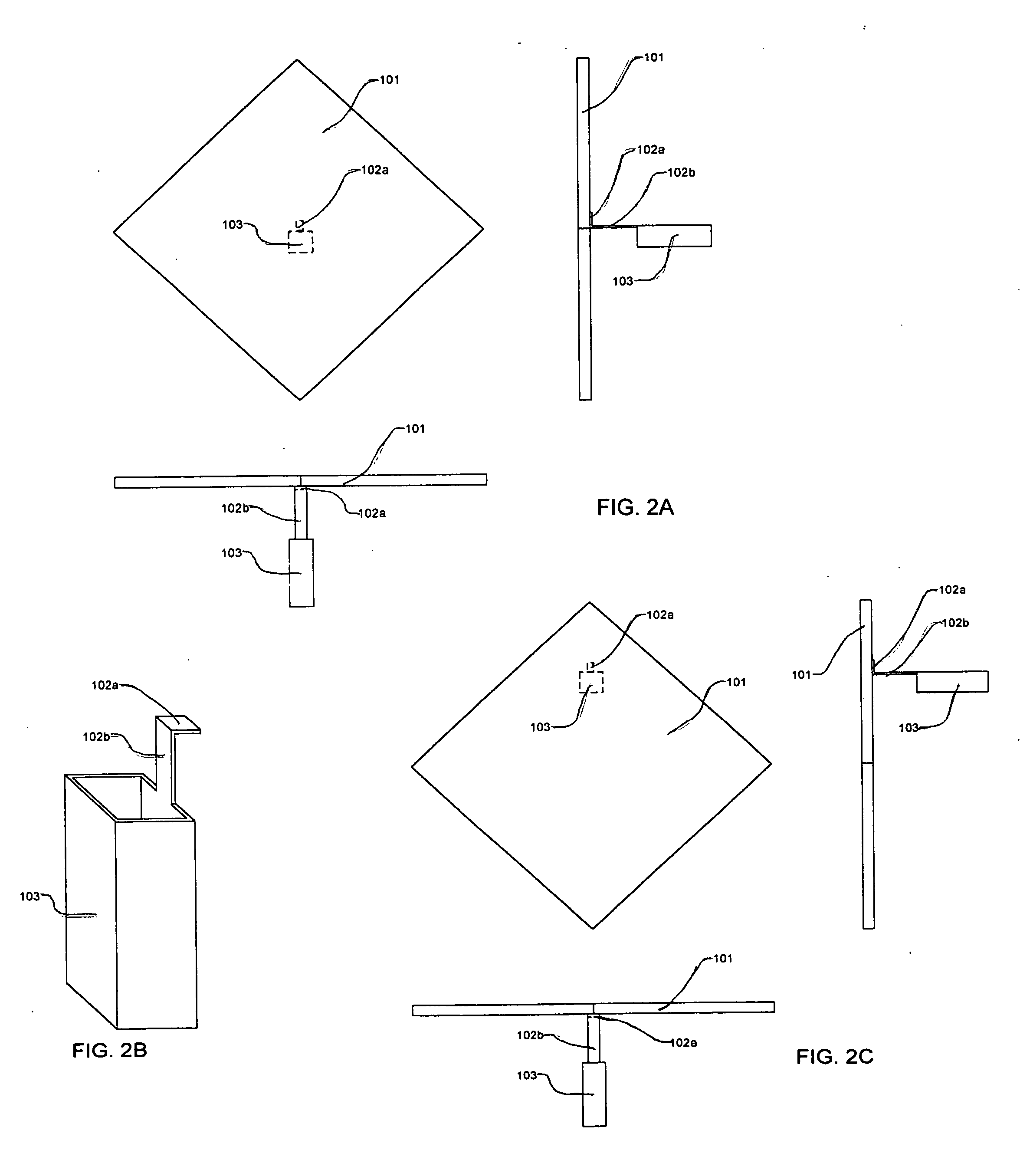Methods and configurations for manufacturing hinges for micro-mirror devices
a technology of micro-mirrors and hinges, applied in the direction of optics, instruments, optical elements, etc., can solve the problems of limited practical usefulness of micro-mirrors, metal hinges commonly implemented in commercially available micro-mirrors tend to have mechanical fatigue and creep phenomena, and metal wires cannot be eliminated, so as to facilitate the fabrication of optically flat mirrors, improve elasticity, and simplify manufacturing processes
- Summary
- Abstract
- Description
- Claims
- Application Information
AI Technical Summary
Benefits of technology
Problems solved by technology
Method used
Image
Examples
Embodiment Construction
[0032]FIG. 1A shows top and side views of the hinge according to the present invention in the preferred embodiment. In this figure, hinge 102, best described as a compound torsion vertical cantilever, is composed of segments 102a, 102b, 102c and 102d. Segment 102a extends out parallel to the substrate surface and is connected directly to the surface of micro-mirror 101 opposite the substrate. Segment 102b extends out perpendicular to the substrate surface and is connected to segment 102a. The other end of segment 102b is connected to an extension (102c) of segment 102d. Segment 102d is itself a direct extension of support posts 103. Support posts 103 extend below the surface of the substrate (104) and anchor the compound hinge structure (102) to the substrate (104). The thickness of hinge 102 is small relative to the micro-mirror in order to ensure most of the bending occurs at the hinge. This improves the flatness of the micro-mirror in its deflected state. FIG. 1B shows a perspect...
PUM
 Login to View More
Login to View More Abstract
Description
Claims
Application Information
 Login to View More
Login to View More - R&D
- Intellectual Property
- Life Sciences
- Materials
- Tech Scout
- Unparalleled Data Quality
- Higher Quality Content
- 60% Fewer Hallucinations
Browse by: Latest US Patents, China's latest patents, Technical Efficacy Thesaurus, Application Domain, Technology Topic, Popular Technical Reports.
© 2025 PatSnap. All rights reserved.Legal|Privacy policy|Modern Slavery Act Transparency Statement|Sitemap|About US| Contact US: help@patsnap.com



